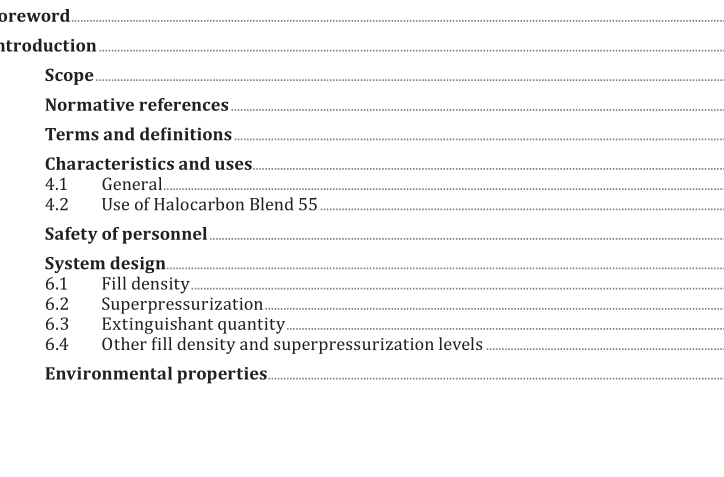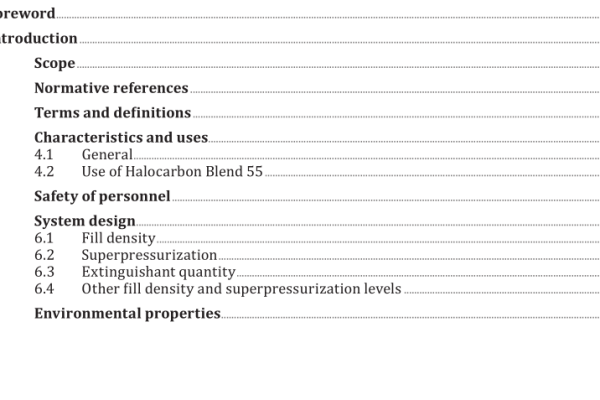ISO 14520-17:2022 pdf download – Gaseous fire-extinguishing systems — Physical properties and system design — Part 17: Halocarbon Blend 55.
1 Scope This document provides specific requirements for gaseous fire-extinguishing systems with respect to the Halocarbon Blend 55 extinguishant. It includes details of physical properties, specification, usage and safety aspects. It also covers systems operating at nominal pressures of 25 bar, 35 bar and 42 bar, superpressurized with nitrogen. This document does not preclude the use of other systems. NOTE 1 bar = 0,1 MPa = 10 5 Pa; 1 MPa = 1 N/mm 2 . 2 Normative references The following documents are referred to in the text in such a way that some or all of their content constitutes requirements of this document. For dated references, only the edition cited applies. For undated references, the latest edition of the referenced document (including any amendments) applies. ISO 14520-1:— 1) , Gaseous fire-extinguishing systems — Physical properties and system design — Part 1: General requirements 3 Terms and definitions For the purposes of this document, the terms and definitions given in ISO 14520-1 apply. ISO and IEC maintain terminology databases for use in standardization at the following addresses: — ISO Online browsing platform: available at https:// www .iso .org/ obp — IEC Electropedia: available at https:// www .electropedia .org/ 4 Characteristics and uses 4.1 General Extinguishant Halocarbon Blend 55 shall comply with the specifications shown in Table 1. Halocarbon Blend 55 [blend of 50 ± 3 % HFO-1233zd(E) and 50 ± 3 % FK-5-1-12 (by mass)] is a colourless, almost odourless, electrically non-conductive gas, with a density approximately 6,38 times that of air. Its physical properties are shown in Table 2. Halocarbon Blend 55 extinguishes fires mainly by physical means, but also by some chemical means.
5 Safety of personnel
Any hazard to personnel created by the discharge of Halocarbon Blend 55 shall be considered in the design of the system.
Potential hazards can arise from the following:
a) the extinguishant itself;
b) the combustion products of the fire; and
c) breakdown products of the extinguishant resulting from exposure to fire.
For minimum safety requirements, see ISO 14520-1:—, Clause 5.
Toxicological information for Halocarbon Blend 55 is shown in Table 5.
ISO 14520-17:2022 pdf download – Gaseous fire-extinguishing systems — Physical properties and system design — Part 17: Halocarbon Blend 55






